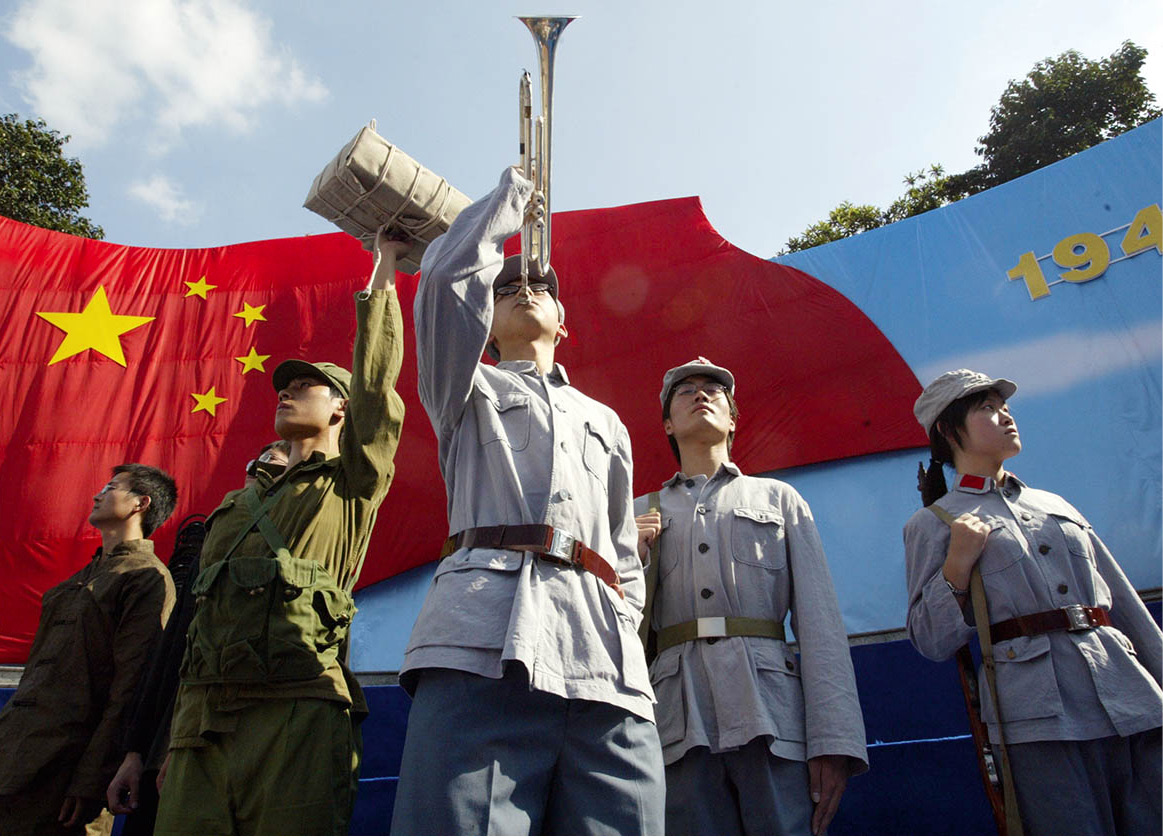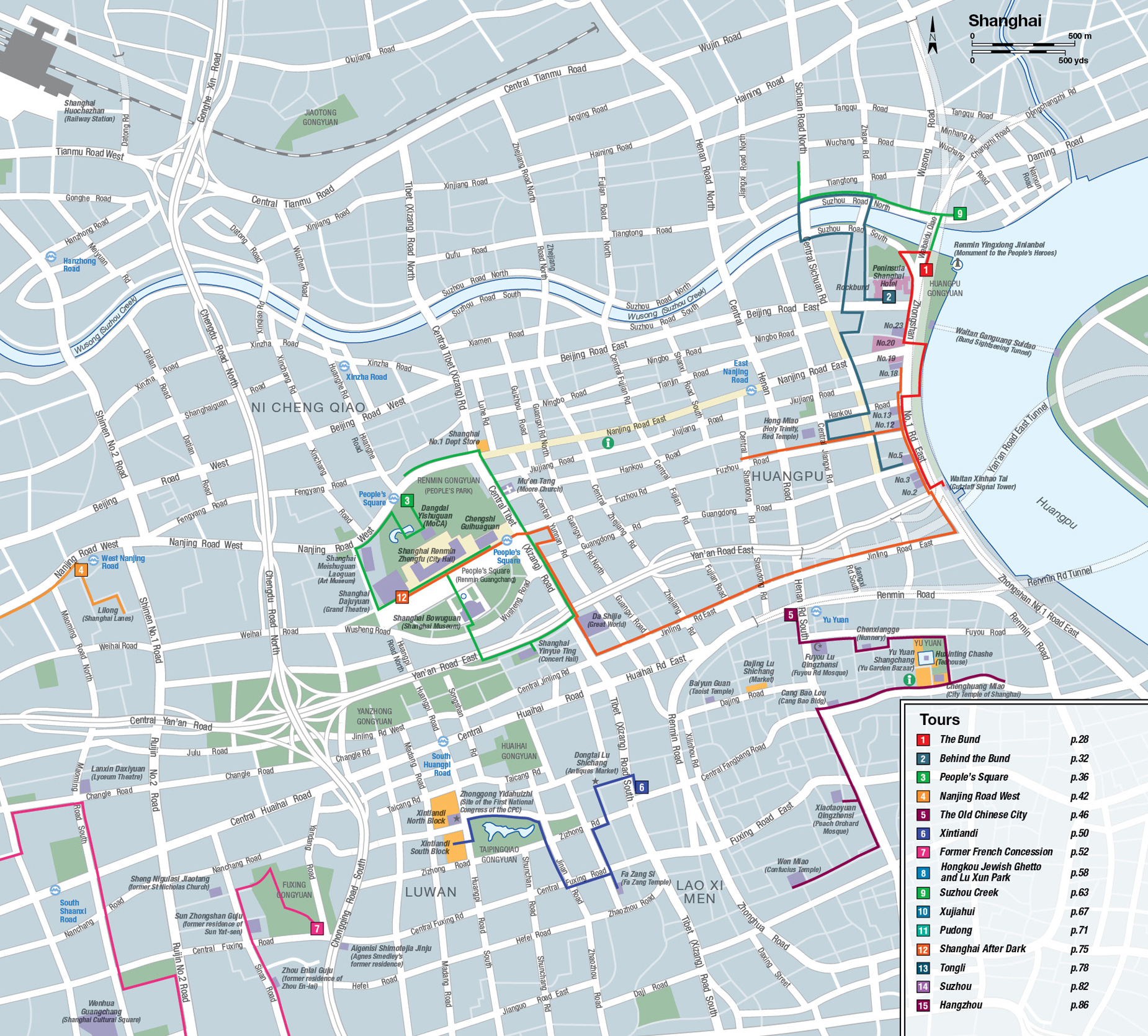4000 BC Prehistoric hunter-gatherers settle in the Yangtze Delta.
1000 BC A tiny farming and fishing village is established on the banks of the Huangpu River.
AD 500–1300 Shanghai grows in size and importance, and it develops a trading culture during the Southern Song Dynasty (1127–1279).
1400s The Huangpu is dredged several times, setting the stage for commercial success.
1554 Shanghai builds a wall to protect itself from Japanese pirates; the circular edges of the wall still define the borders of the Old Town.
1685 The Qing Dynasty opens a customs office, and Shanghai grows in commercial importance, with cotton, silk and tea the key exports.
1760 The Qianlong emperor restricts all foreign trade to Canton.
1839–45 The British Army invades China and proceeds to take China’s coastal cities by force. In 1842, the Qing government is forced to sign the Treaty of Nanjing, which gives Britain a foreign concession in Shanghai.

Shanghai traded with Britain in the 19th century
Mary Evans Picture Library
1849 The French establish their own settlement along Huangpu River.
1851–4 The Taiping Rebellion rages across China, and Chinese residents pour into Shanghai.
1850s Shanghai’s boisterous Golden Age begins, and it becomes one of the fastest-growing and most famous cities on earth. It is rife with crime, but rich in opportunity for both Chinese and Westerners.
1864 Decisive Taiping rebellion is quelled by Qing forces.
1895 Following China’s defeat in the Sino-Japanese War, the Treaty of Shimonoseki allows the Japanese to set up factories in Shanghai as well as other treaty port cities. Other foreign powers follow suit.
1911 The Qing Dynasty collapses, and a weak and fragmented Nationalist government takes over the Republic of China.
1921 The Chinese Communist Party is founded in Shanghai; Mao Zedong attends the meeting.
1923 The Hongkong and Shanghai Bank Building opens on the Bund.
1931–41 Shanghai becomes a safe haven for some 20,000 Jews fleeing persecution in Europe.
1931–2 Japan bombs and invades Shanghai, but withdraws under the weight of international pressure.

A Chinese machine-gun crew in 1937
Mary Evans Picture Library
1937 Japan bombs and invades Shanghai again, destroying many buildings and driving scores of residents out of the city.
1949 The Communists win the Chinese Civil War and the People’s Republic of China is founded.

Dressed as Liberation Army soldiers on National Day
David Shen Kai/Apa Publications
1949–54 The government shuts down vice industries in Shanghai, including gambling dens, dance halls and brothels. In 1950, foreigners are expelled from Shanghai.
1978 Deng Xiaoping launches the ‘openings and reforms’ era.
1992 Deng takes his famous ‘southern tour’ to encourage commerce in Shanghai, which he calls the Dragon’s Head of the Yangtze Delta.
1994 Former Shanghai mayor Jiang Zemin becomes president of China. Metro line 1 opens, as does the Oriental Pearl Tower in Pudong, symbol of the new city.
1998 The Jinmao Tower opens in Pudong.
1999 Pudong International Airport opens, and the city’s elevated highway system is finished.
2001 Shanghai Cooperation Organisation is founded. Shanghai hosts the 9th APEC Summit.
2002 Shanghai hosts the first Tennis Masters Cup in China.
2003 Hu Jintao succeeds Jiang Zemin as president of China.
2004 Shanghai hosts the first Formula One Grand Prix in China. The high-speed Maglev rail line opens.
2008 The World Financial Centre building opens in Pudong.
2010 Shanghai holds the largest World Expo in the fair’s history.
2011 The Shanghai metro becomes the longest in the world, totalling around 420km (260 miles), with more lines under construction. A high-speed rail line opens (ahead of schedule) linking Shanghai and Beijing in less than five hours.
2014 The Shanghai Tower is completed, becoming the second-tallest building in the world, at 632m (2,073ft). It forms a trio of super-skyscrapers standing side-by-side in Pudong.
Shanghai

